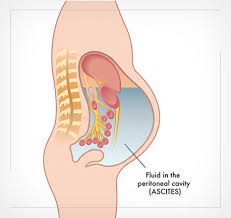What is ascites and it's relation with lymphoedema?
What is ascites?
Ascites is a buildup of fluid in the abdomen. When it’s severe, ascites can cause stomach swelling (distention), abdominal pain, and difficulty breathing and eating.
There are several kinds of ascites. Two common forms are caused by liver cirrhosis (liver disease), or certain cancers of the abdomen. When the buildup of fluid contains chyle (a milky fluid that’s a combination of lymphatic fluid and fat), this form of ascites is known as chylous ascites and is a lymphatic flow disorder.
Lymph vessels carry lymph fluid to veins, where it returns to the bloodstream, playing a crucial role in immune function and fat and protein transport. Injury to lymphatic vessels, congenital abnormalities or excessively high venous pressures can result in lymphatic flow problems and leakage of lymphatic fluid into the chest, abdomen or other body cavities.
Causes of ascites
Ascites can have many potential causes, including:
Injuries to the central lymphatic system due to surgery or trauma (this is also known as traumatic chylous ascites)
Congenital lymphatic malformations such as lymphangiomatosis
Tumors
Systemic diseases or infections such as tuberculosis
Congenital syndromes such as Gorham-Stout, Noonan and Turner syndromes
Elevated venous pressures due to heart failure, pulmonary hypertension or congenital heart surgery
Signs and symptoms of ascites
Signs and symptoms of ascites
Initially, ascites causes few symptoms. When enough fluid accumulates, though, affected individuals will have either painless abdominal swelling or stomach pain.
Sometimes, fluid from the abdomen can travel through openings in the diaphragm and lead to accumulation of fluid in the chest. When this happens, it can cause breathing difficulties.
Diagnosis of ascites
Doctors use a combination of imaging tests to diagnose ascites. Tests may include X-ray, CT, ultrasound or MRI. A diagnosis of ascites is made when these tests demonstrate the presence of fluid in the peritoneal spaces.
Your doctor may also use a thin needle to withdraw some of the accumulated fluid. The fluid can then be tested to determine whether it originated in the lymphatic system.
Additionally, lymphatic imaging techniques, such as intranodal lymphangiography and dynamic contrast magnetic resonance lymphangiography, might be used to determine the exact source of the fluid.
Treatment for ascites
patients are treated by a team of experts who specialize in lymphatic imaging and interventions. The team will determine the best treatment approach for each patient’s condition.
When lymphatic imaging is able to identify the source of the leak that is causing ascites, the source can be sealed during an embolization procedure.

